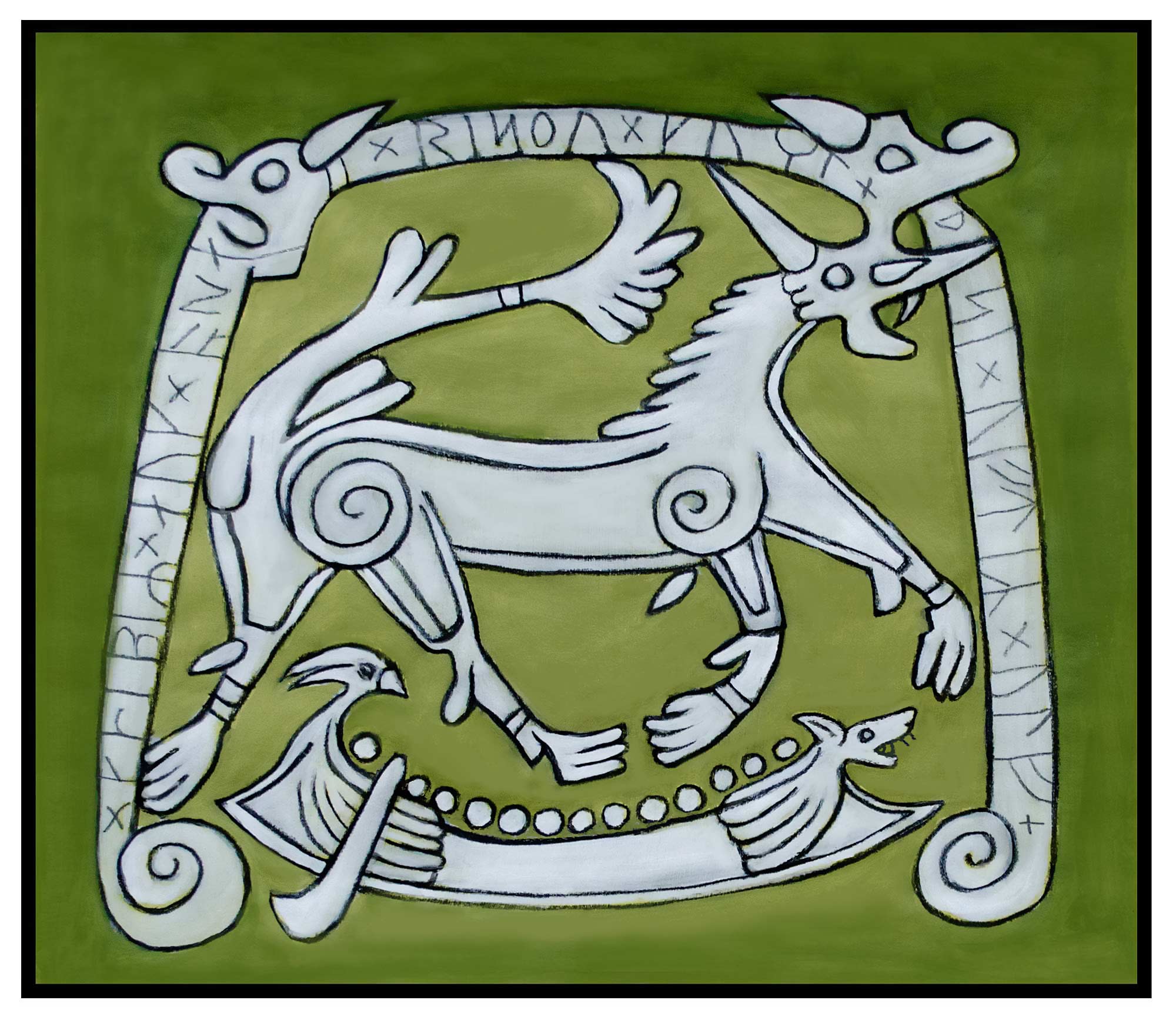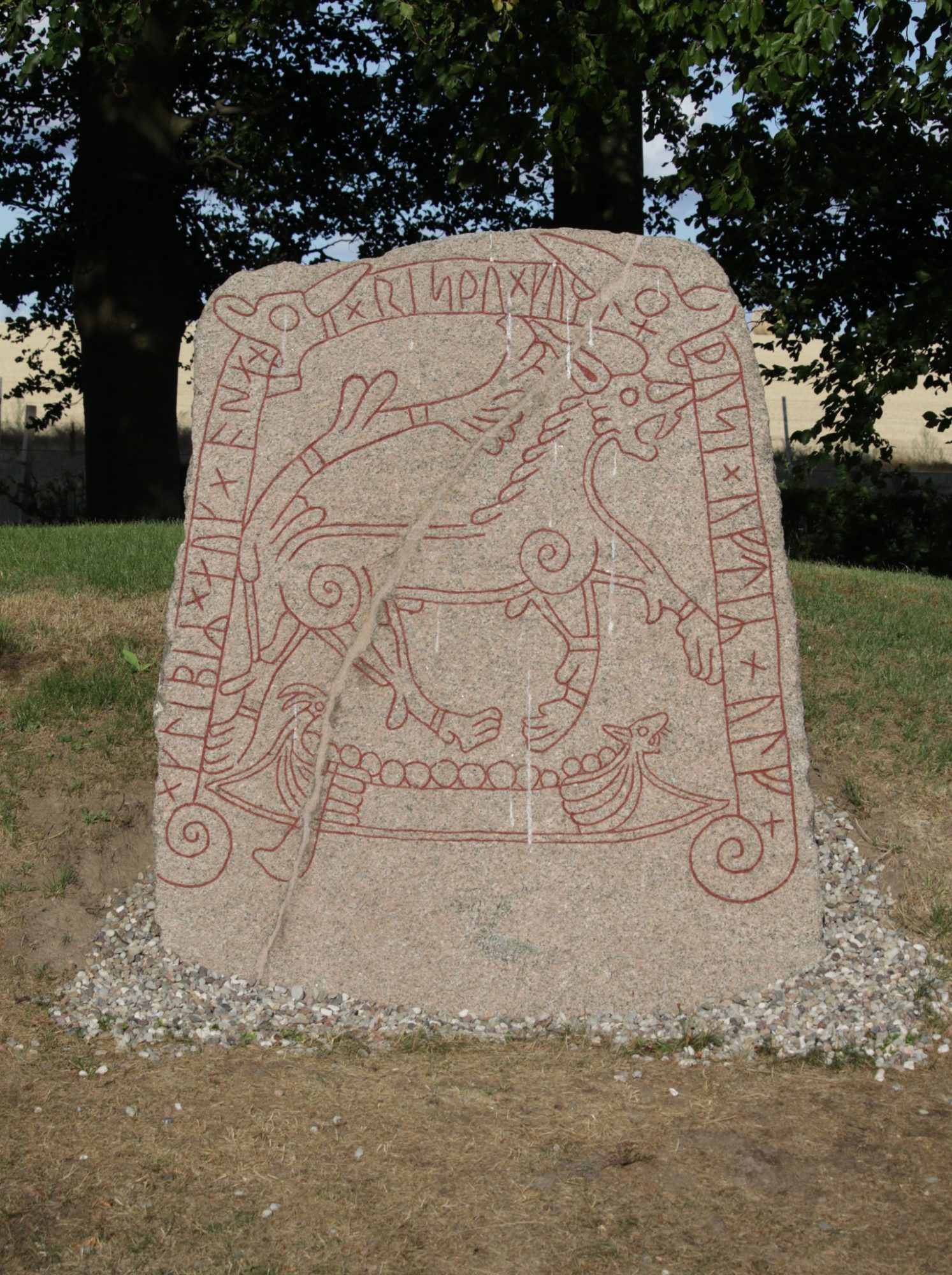Fenris the Wolf and the Apocalypse
The animal in this drawing is angry. He strides forward with his tail up and bares his teeth. Below him is a ship with a beast beakhead. There is a curved band of runic letters framing the beast and the ship. Two open gulping mouths swallow the words.
What does this image mean?

Some believe this image is from Norse mythology and represents the last battle before the apocalypse. It could be Fenris the monstrous wolf and it could be the final stage of events before the apocalypse known as the Ragnarok. In the last battle Fenris slays and swallows the god Odin– Allfather and King of the Aesir.
In Norse mythology the ship is Naglfar, the apocalyptic ship made of the fingernails and toenails of the dead. A ship on a journey carrying the forces of chaos to do battle with the gods.
After a series of Earth events and battles many gods die. Fenris and other beasts and people perish, and the Earth is destroyed and collapses into the sea. Only the World Tree, a giant ash tree supporting the universe, survives. This was the apocalypse, the end of the world!
In time the giant serpent wriggles under the sea and the waters rise. The Earth rises again from the sea and is fresh and green. Sunshine and light abound. Surviving gods return and the Earth is populated again by the two human survivors that hid inside the World Tree.
The Runic alphabet is known as the futhark and was invented about two thousand years ago. In Norse mythology the runes were a gift from Odin who lived in Valhalla– a palace, a place like heaven for brave slain warriors. He lived with his messengers Huginn (Hoo-gin) and Muninn (Moo-nin), two ravens who travelled the world every day to bring Odin the latest news.

I have only told a part of the story, a skeleton really. There are many more fantastic characters and events in the full story of the gods and the final battle.
The Vikings were guardians to a rich artistic culture. They decorated their weapons, furniture and houses with unique designs and motifs and were highly skilled in the working of wood, iron, cow horn and ivory. When a member of the family died, they carved runes on a stone with a knife or chisel and made a memorial. The runic text gave the name of the deceased, the people who raised the stone and the person who engraved the stone. The real drawings on the real runestones are rubbed with falu red, the same colour used during the Viking age. Most of the runestones are dated to the 11th Century AD and the end of the Viking Age.
This incredible runestone, now at the Tullstorp churchyard in Sweden is in memory of a man and raised by a man and a woman. It is possible that this runestone symbolizes that the man was a true warrior and would travel on his final journey to Valhalla after death. I do not know what the symbolism means exactly but I do know that the runic records are rich with ideas and stories that bring extraordinary characters and gods to life.
Somehow the mythology has the power to reach and explore a fear of death which we may not do otherwise in the real world.
